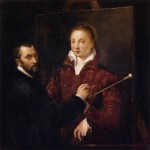
The image we’ve chosen to represent the upcoming Magnificat program featuring music by four women from the 17th century was painted by the extraordinary Sofonisba Anguissola in 1550. An exceptional work that captures the place of women in late Renaissance, the painting is both a self portrait, a portrait of her master teacher, and a compelling allegory of women as defined by men of the period. It aptly symbolizes the barriers to artistic expression faced by women and the fruits of the individual struggle in the face of those barriers.
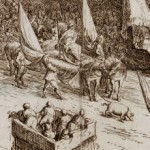
Paul at the excellent BibliOdyssey blog, has a post with a series of fascinating prints depicting Bologna’s annual Festa della Porchetta – the Festival of the Suckling Pig, celebrated by the Bolognese for five centuries until the arrival of Napolean’s army in 1796. The tradition has apparently been revived in the last decade – including a shared roasted pig – to help spread peace in the city.
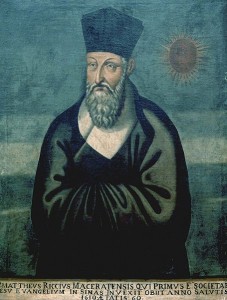
Matteo Ricci was the first Westerner to be invited into the Forbidden City in Beijing. During his years in China, Ricci wrote extensively and maintained an unprecedented dialogue with the Chinese intelligentia.
On his remarkable Galileo 1610 website, Mark Thompson writes about the role of music Gilileo's scientific work:
“Thus the effect of the fifth is to produce a tickling of the eardrum such that its softness is modified with sprightliness, giving at the same moment the impression of gentle kiss and of a bite.”
Music played not only a unique, but an essential role in leading Galileo to his new physics. Because it is an art demanding precise measurement and exact divisions, music reflected the spirit of Galileo’s science.
One of Galileo’s most important discoveries, the law of falling bodies, can actually be traced to his early musical experiments with his father, Vincenzo Galilei, a musicologist and lute virtuoso. Together, they discovered the motions of pendulums while measuring with weights, the tensions of lute strings.
Galileo was an outstanding lutenist himself, whose “charm of style and delicacy of touch” surpassed even that of his father. ...

According to author Leo Rosten in his The Joys of Yiddish, the first printed mention of the word bagel is in the 1610 Community Regulations for the city of Krakow, Poland. The regulations state that "bagels would be given as a gift to any woman in childbirth." The ring shape may have been seen as a symbol of life.
It was also in 1610 that Europe got its first taste of tea, a beverage that had been popular for centuries in China and Japan, as Amsterdam received its first shipment of the intoxicating leaves. The Dutch East India Company initially marketed tea as an exotic medicinal drink, but it was so expensive that only the very wealthy could afford it and it only became available to the general public later in the century.
In 1610, Cornelius Drebbel, best known perhaps for his invention of the submarine, applied the principles he had used ...

via Telegraph.co.uk
The mannerist painter Michelangelo Merisi da Caravaggio died on July 18 1610 at the age of 39 and the circumstances of his death have been controversial ever since. It has been suggested that he contracted syphilis or even that he was assassinated but anthropologists from the universities of Pisa, Ravenna and Bologna are studying other theories – that he contracted malaria while traveling in Italy or that he suffered from lead poisoning. The anthropologists hope to prove their theory by carrying out DNA tests on bones which they believe are the remains of the Renaissance artist.
Renowned for his hot temper, heavy drinking and violent temperament Caravaggio was forced to go on the run in 1606 after killing a man in a tavern brawl, a crime for which he ...

In January 1610 Galileo Galilei first observed the four moons of Jupiter now known, appropriately, as "The Galilean Moons". The largest of the many moons of Jupiter, Galileo initially named his discovery the Cosmica Sidera ("Cosimo's stars") but they are now known by the names given by Simon Marius in his 1614 Mundus Jovialis: Io, Europa, Ganymede and Callisto - the lovers of Zeus.
Galileo first noticed Saturn's peculiar shape later in 1610, well after the publication of his landmark book Sidereus Nuncius. The story of how he initially revealed the new discovery to his fellow astronomers by means of an anagram is told in a 1974 article by Albert van Helden of Rice University.
Galileo's discovery of celestial bodies orbiting something other than the Earth dealt a serious blow to the Ptolemaic, or the geocentric, cosmology in which the universe orbits around the Earth. The possibility of viewing ...
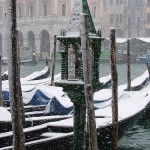
Like most I suspect, when I think of Venice I imagine a sun-baked Piazza of San Marco, but of course winter visits Venice each year and it seems that before the advent of modern heating, the experience was particularly brutal. In his engaging journals recounting his three years in Venice during the 1860s, W.D. Powell describes the attitude of the locals to winter:
"The Venetians pretend that many of the late winters have been much severer than those of former years, but I think this pretense has less support in fact than in the custom of mankind everywhere to claim that such weather as the present, whatever it happens to be, was never seen before."
In common with other places (like California) where the weather is generally agreeable, houses are built with a view to coolness in summer and one can only imagine that the experience of a Christmas or Epiphany feast ...
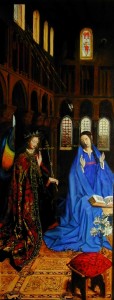
Last Sunday, I attended Artek’s performance of Monteverdi’s Vespro della Beata Vergine at the National Gallery in Washington DC. It was lovely to hear a fine performance of this masterpiece (a piece I’m thinking about alot these days) in one of my favorite buildings in the world.

Representing Magnificat, I will be attending the annual conference of the American Musicological Society in Philadelphia this later this week. It has been several years since I’ve had the opportunity to attend the AMS conference and I am looking forward to meeting old colleagues, making new friends and listening to the wide range of presentations on current work being done in musicology. The conference program is available for download (PDF) and the abstracts for papers can be downloaded here (PDF). Over the week I will be highlighting some of the sessions relevant to the music and culture of the 17th Century and posting abstracts from the scheduled papers.
A particularly interesting short session on the fascinating figure Athanasius Kircher scheduled for the opening afternoon of the conference. I encountered Kircher while preparing the first program on the very first Magnificat series concert in 1992, which included Carissimi’s magnificent oratorio Jephte. In ...
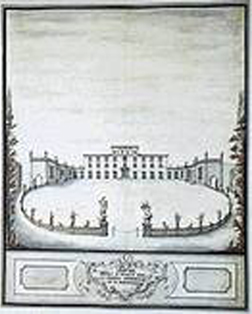
(This is the second of a three part essay on Francesca Caccini and La Liberzione di Ruggiero, which Magnificat will perform October 16-18. The first part, a biographical sketch of Francesca, "About Francesca", was posted here earlier.)
On February 3, 1625, sometime in daylight, 160 gentildonne and their husbands, and an unknown number of foreign guests rode in carriages out the southeastern gate of Florence, and half a mile up a tree-lined avenue to a villa atop the nearest hill that had very recently been renovated as the personal palace of Tuscany’s regent, Archduchess Maria Maddalena d’Austria. Leaving their carriages in a grassy courtyard guarded by two squadrons of armed cavalry, the Archduchess’ guests were welcomed into the palace by a military commander, and led to bench seats in a temporary theatre built in the villa’s loggia, to hear a new commedia in musica based on a well-known plot (two sorceresses ...
In Charpentier's delightful divertissement Les plaisirs de Versailles, Comus, the “God of Feasting” seeks to calm a dispute between the haughty diva Music and the loquacious Conversation by offering the delights of marzipan, fine wine, and above all, Chocolate. Music is aghast, but Conversation is quite eager to sample the delicacy.
Comus: Let your disputes not cause commotion here! Let us play. To both of you beauties I shall give chocolates.
La Musique: Chocolate! God forbid that he give any to this chatterbox. As for me, I tell you, I do not wish to taste any. She would never cease her hot-air chatter.
La Conversation: Chocolate is good, dear Comus. By your influence I long to taste a little.
La Musique: No, Comus!
La Conversation: Comus, to listen to her is to waste good time. Chocolate!
Music’s concern about the effect of chocolate on the “babbling divitnity” Conversation, is understandable to anyone who has spent Halloweeen in the company ...

by Frederick K. Gable
St. Gertrude’s Chapel (shown in a 1830 engraving at right) was built in the late fourteenth century by the Bruderschaft of St. Gertrude, listed in 1356 as one of eighteen charitable fraternities associated with the Jakobikirche in Hamburg. Like similar orders throughout Europe, the fraternity promoted good works through financial support of the church and participation in its religious activities. Members could thereby improve their reputation in the city and increase their chances of gaining salvation. St. Gertrude’s Fraternity was chiefly devoted to caring for the poor and the sick, especially persons afflicted with leprosy. The chapel land was originally known as “der wüste Kirchof” (the desolate churchyard) and “platea leprosorum” (place of the lepers).
In 1391 the fraternity began construction of the chapel, probably assisted by a guild of masons known as the “Mauerleute.” Its first stage was an octagonal Gothic-domed structure, twenty-five feet on a side, ...
“A pastiche of little madrigals” is how Gaspare Murtola described Guarini’s Il Pastor Fido in 1626, and while his comment was intended as derogatory, he succeeding in pointing both to the strength and weakness of the play. The overblown and self-consciously poetic language of Guarini’s tragicomedy succeeded in making the play a relative failure on the stage, tremendous success as a work of literature, and a goldmine for composers seeking affective, emotional texts through which to display the new compositional techniques of the early baroque.
Guarini’s play, whether by design or not, turned out to be just as Murtola had described it: a series of little madrigals, from which composers drew texts for decades. Many of the “little madrigals” took on a life of their own, with composers seemingly competing with each other with their different settings. Often when the names of specific characters from the play occurred in the text, ...
Guarini’s pastoral drama Il Pastor Fido was very consciously modeled on Aminta, written by his slightly younger colleague at the Este court in Ferrara Torquato Tasso. Both Aminta and the Pastor fido belong to the tradition of pastoral literature that was very much in vogue in Renaissance Italy. The fundamental characteristic of the pastoral drama was its idealized setting in ‘nature’, most often peopled by shepherds and nymphs who contradict the bucolic setting of their lives by expressing very urban sentiments in sophisticated language. Pastoral literature in general tended to idealize the innocent and serene lives of its rustic characters in contrast to complex and corrupt city life. The archetypal paradigm of the pastoral life was the Golden Age: a mythical, utopian time when human beings were content with their simple, peaceful lives, and when the uncultivated earth offered them everything they needed. The myth of the Golden Age, already ...
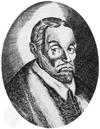
In 1605 Cardinal Robert Bellarmine wrote that Guarini’s play Il Pastor fido (The Faithful Shepherd) was more harmful to Catholic morals than the Protestant Reformation itself. While such hyperbole is typical of polemical tracts of the period and is characteristic of conservative reaction to any challenge to the established order, the Cardinal’s comments nevertheless highlight the impact of Guarini’s pastoral drama on the artistic and cultural climate of the time. The arguments echo those leveled against Monteverdi by Giovanni Maria Artusi beginning in 1600: the unacceptable violation of established classical principles. In fact the madrigals that Artusi quoted in his attacks were settings of texts drawn by Monteverdi from Guarini’s play, though Artusi left out the texts and commented only on Monteverdi’s harmonic improprieties.
Of course ecclesiastical criticism of Guarini’s heretic mingling of the Aritotelian dramatic genres in creating his pastoral tragicomedy and the licentious behavior of its bucolic ...

Magnificat's first program this season features settings of texts drawn from Guarini's pastoral drama Il Pastor Fido. Like so many poets, artists, and musicians of the Italian Renaissance, Guarini benefited from the patronage of the Este family of Ferrara. Both Guarini and his friend and rival Tasso had stormy relationships with the court that employed them and the intrigues within and battles outside the court doubtless caused misery for many, but from our vantage point several centuries hence we are indebted to them for the great works they supported.
The Estensi, a branch of the 10th-century dynasty of the Obertenghi, took their name from the township and castle of Este, near Padua. The founder of the family was the Margrave Alberto Azzo II (died 1097), through whose son Folco I (died 1136?) descended the House of Este. The family first gained prominence as leaders of the Guelphs in the wars ...
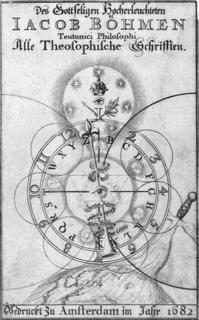
The image used on the Magnificat Website and on the season brochure is taken from the frontispiece to the collected works of Jakob Böhme, published in Amsterdam in 1682. The orginal image is reproduced above. For the website the orginal type has been photo-shopped out and for the brochure only details were used.The brochure can be downloaded by clicking this link.
Jakob Böhme was born in 1575 in Altseidenberg, near Görlitz in eastern Germany. Following apprenticeship, he set up his own shop as a shoemaker in Görlitz, where he resided (except for a period of exile in Dresden) until his death on November 17, 1624. After a profound mystical experience at the age of twenty five (1600), while remaining active as a shoemaker and later a merchant, he embarked on a remarkable career of independent scholarship and writing. Though censured for heresy and silenced for seven years by his town council, ...













